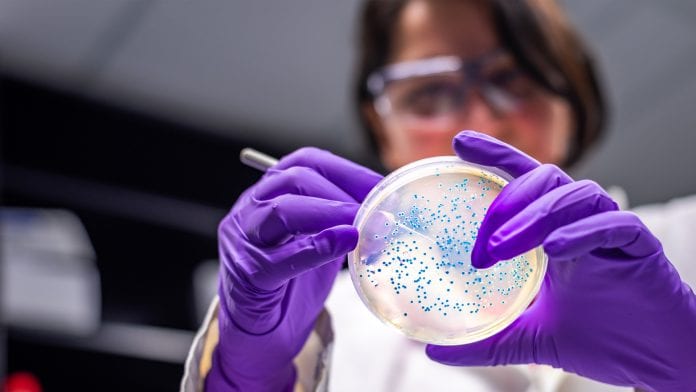
A new nanothin antibacterial coating has been developed that could help prevent and treat deadly superbugs.
A team of researchers led by RMIT University in Melbourne, Australia, has developed the material, which is one of the thinnest antimicrobial coatings developed to date. The nanothin coating is effective against a broad range of drug-resistant bacteria and fungal cells, while leaving human cells unharmed.
Antibiotic resistance is a major global health threat, causing at least 700,000 deaths a year. Without the development of new antibacterial therapies, the death toll could rise to 10 million people a year by 2050. Globally, fungal infections kill about 1.5 million people each year, and, an emerging threat to hospitalised COVID-19 patients is the common fungus, Aspergillus, which can cause deadly secondary infections.
The research has been published in the American Chemical Society’s journal Applied Materials & Interfaces.
Nanotech developments
The new coating is based on an ultra-thin 2D material – black phosphorus (BP) – that until now has mainly been of interest for next-generation electronics.
Studies have indicated BP has some antibacterial and antifungal properties, but the material has never been methodically examined for potential clinical use. This research reveals that BP is effective at killing microbes when spread in nanothin layers on surfaces like titanium and cotton, used to make implants and wound dressings.
Co-lead researcher Dr Aaron Elbourne said finding one material that could prevent both bacterial and fungal infections was a significant advance.
“These pathogens are responsible for massive health burdens and as drug-resistance continues to grow, our ability to treat these infections becomes increasingly difficult,” Elbourne, a Postdoctoral Fellow in the School of Science at RMIT, said. “We need smart new weapons for the war on superbugs, which don’t contribute to the problem of antimicrobial resistance. Our nanothin coating is a dual bug killer that works by tearing bacterial and fungal cells apart, something microbes will struggle to adapt to. It would take millions of years to naturally evolve new defences to such a lethal physical attack.
“While we need further research to be able to apply this technology in clinical settings, it’s an exciting new direction in the search for more effective ways to tackle this serious health challenge.”
“BP breaks down in the presence of oxygen, which is normally a huge problem for electronics and something we had to overcome with painstaking precision engineering to develop our technologies,” said co-lead researcher Associate Professor Sumeet Walia, from RMIT’s School of Engineering, who has previously led groundbreaking studies using BP for artificial intelligence technology and brain-mimicking electronics.
“But it turns out materials that degrade easily with oxygen can be ideal for killing microbes – it’s exactly what the scientists working on antimicrobial technologies were looking for. So, our problem was their solution.”
How does the material work?
As BP breaks down, it oxidises the surface of bacterial and fungal cells – a process known as cellular oxidisation, which ultimately works to rip them apart.
For the study, the effectiveness of nanothin layers of BP against five common bacteria strains was tested, including E. coli and drug-resistant MRSA, as well as five types of fungus, including Candida auris. Up to 99% of bacterial and fungal cells were destroyed in just two hours.
BP also began to self-degrade in that time and was entirely disintegrated within 24 hours.
The laboratory study identified the optimum levels of BP that have a deadly antimicrobial effect while leaving human cells healthy and whole, and the team have now begun experimenting with different formulations to test the efficacy on a range of medically-relevant surfaces.
The team is keen to collaborate with potential industry partners to further develop the technology, for which a provisional patent application has been filed.
























